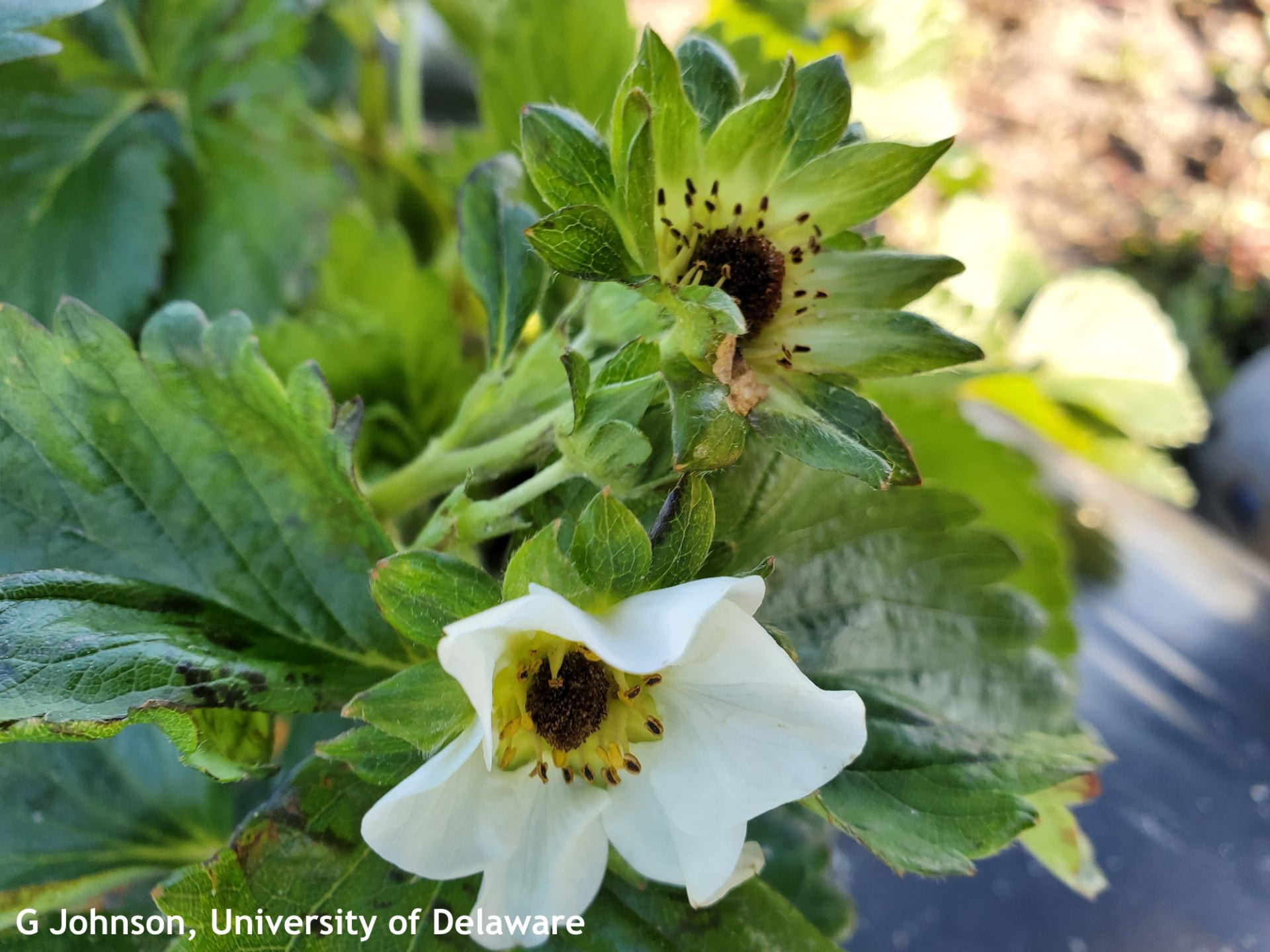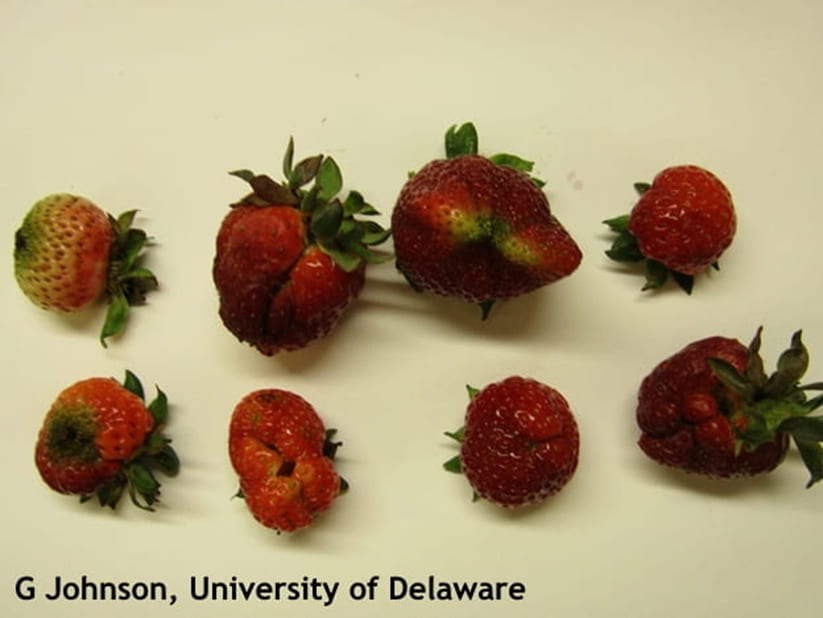Gordon Johnson, Extension Vegetable & Fruit Specialist; gcjohn@udel.edu
Strawberries with row covers removed were exposed to freezing temperatures on April 11 in some areas of the state.
Frost and freezes will commonly kill the whole strawberry flower. Cold damage that does not kill the whole flower will also cause berry deformities because some achenes have been damaged. Cold injury can also cause fruit with multiple tips.
Frost injury. Pistils in the center of blossoms turn black or brown.
Misshapen strawberries during spring often results from poor pollination. Strawberries are aggregate fruits. They have multiple ovules per receptacle where the fruit is formed. The strawberry receptacle may have up to 500 ovules per berry. You will see these as “seeds” on the outside of the strawberry fruit which are called achenes. To have the largest berry possible, you need as many of these ovules to be successfully pollinated as possible. To avoid misshapen fruits the achenes need to be pollinated evenly and fully. With pollination, the receptacle tissue around the achenes will develop to form the strawberry fruit.
Strawberries have both male and female flower parts on the same flower and can self-pollinate. Wind and rain can move pollen within the flower. However, this usually does not allow for full pollination of all the ovules. Bees, such as honeybees or bumblebees, are usually necessary to allow for complete pollination. Some flowers produce bigger berries when cross pollinated with pollen from other flowers. Incomplete pollination will often result in smaller or misshapen berries.
Strawberry flowers are not heavy nectar producers. However, bees do visit the flowers and studies have shown that where native bees are limited, adding hives of honeybees or bumble bees increased productivity. It is recommended that each flower receive 16-25 bee visits. This is particularly true of the king berries, which form from the first flower to open on a fruiting truss.
You can distinguish poor pollination from other types of damage because fruit will have variable achene (seed) size. Large seeds received pollination, while small seeds did not. Poor pollination is common when plants have been under row covers during bloom and when the bloom period has been rainy, stormy, or cold.
Strawberry deformities caused by poor pollination and cold injury.


